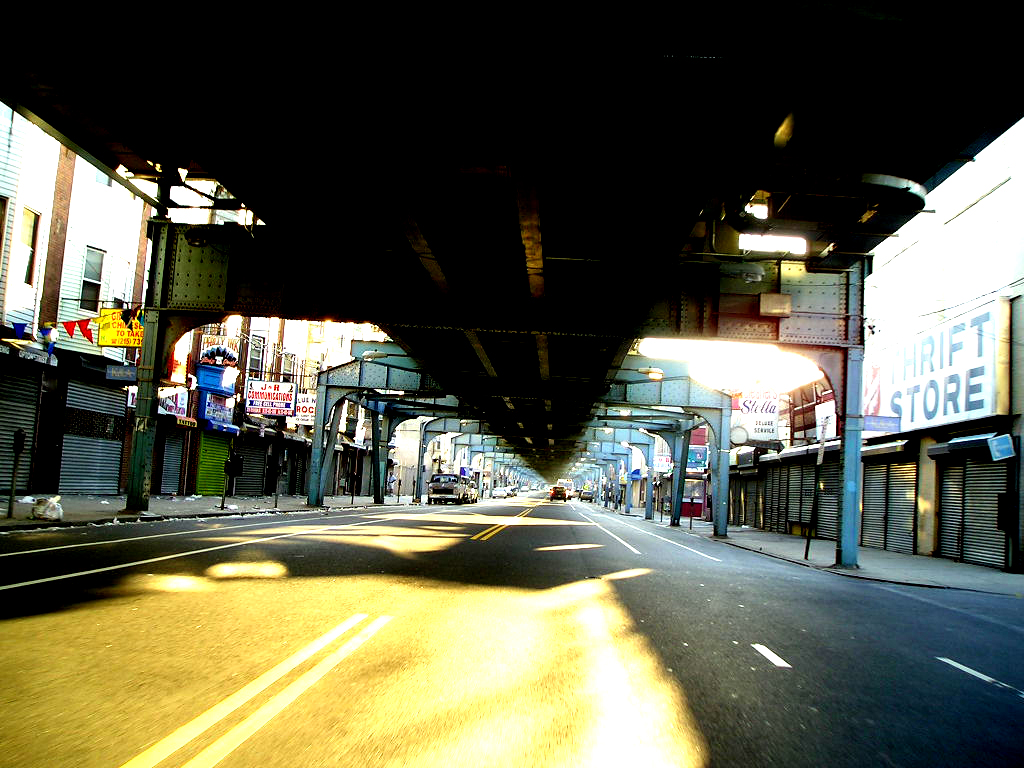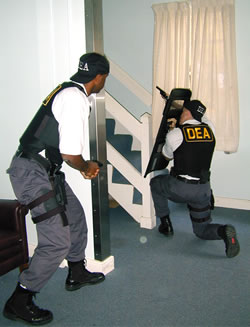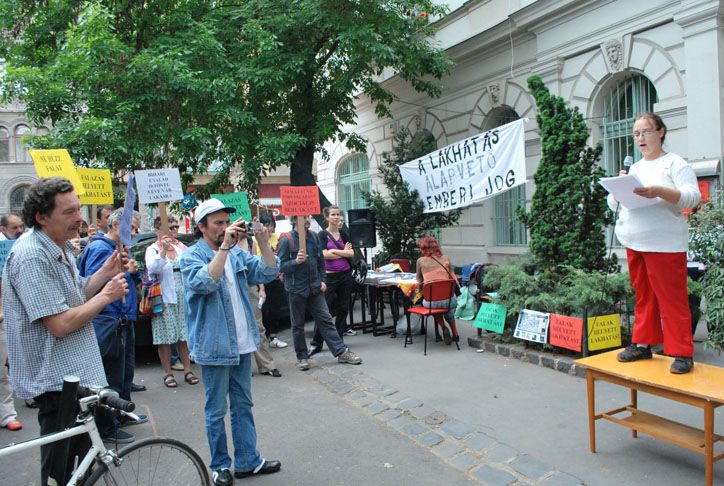|
Kensington, Philadelphia
Kensington, colloquially known locally as “Kenzo,” is a neighborhood in Philadelphia that belongs to or divides Lower Northeast and North Philadelphia. As with all neighborhoods in the city, the lack of any official designation means the boundaries of the area vary between sources over time and are disputed among locals. Kensington, as most long-term residents view it, refers generally to the area consisting of Kensington, East, or Lower Kensington, West Kensington, and Harrowgate. The adjacent Fairhill and Norris Square neighborhoods are more separate but may be included in Kensington; Fishtown and South (Olde) Kensington were previously included but have developed new identities with gentrification. The most conservative boundaries of the neighborhood, shown in the map below, are Front Street and 5th Street to the west, the Amtrak train tracks to the North, Trenton Avenue, the Trenton Avenue train tracks, and Frankford Avenue to the east, and Cecil B. Moore Avenue to t ... [...More Info...] [...Related Items...] OR: [Wikipedia] [Google] [Baidu] |
Beatty's Mills Factory Building
Beatty's Mills Factory Building, also known as Powell Mills, is a historic textile mill in the Kensington neighborhood of Philadelphia, Pennsylvania. It was built in 1886, and is a five-story, red brick building in the Italianate style. It was part of a complex of five buildings and is the only remaining structure. It is attached to a two-story school building built in 2002. The building housed textile-related manufacturing operations until 2000. It houses the Coral Street Arts House. ''Note:'' This includes It was added to the National Register of Historic Places The National Register of Historic Places (NRHP) is the United States federal government's official list of districts, sites, buildings, structures and objects deemed worthy of preservation for their historical significance or "great artist ... in 2004. References External linksCoral Street Arts House website {{National Register of Historic Places in Pennsylvania Industrial buildings and structures on the ... [...More Info...] [...Related Items...] OR: [Wikipedia] [Google] [Baidu] |
Deindustrialization
Deindustrialization is a process of social and economic change caused by the removal or reduction of productive capacity, industrial capacity or activity in a country or region, especially of heavy industry or manufacturing industry. There are different interpretations of what deindustrialization is. Many associate Deindustrialization by country#United States, American deindustrialization with the mass closing of automaker plants in the now so-called "Rust Belt" between 1980 and 1990. The US Federal Reserve raised interest and exchange rates beginning in 1979, and continuing until 1984, which automatically caused import prices to fall. Japan was rapidly expanding productivity during this time, and this decimated the US machine tool sector. A second wave of deindustrialization occurred between 2001 and 2009, culminating in the automotive industry crisis of 2008–2010, automaker bailout of GM and Chrysler. Research has pointed to investment in patents rather than in new capi ... [...More Info...] [...Related Items...] OR: [Wikipedia] [Google] [Baidu] |
Asian Americans
Asian Americans are Americans of Asian ancestry (including naturalized Americans who are immigrants from specific regions in Asia and descendants of such immigrants). Although this term had historically been used for all the indigenous peoples of the continent of Asia, the usage of the term "Asian" by the United States Census Bureau only includes people with origins or ancestry from the Far East, Southeast Asia, and the Indian subcontinent and excludes people with ethnic origins in certain parts of Asia, including West Asia who are now categorized as Middle Eastern Americans. The "Asian" census category includes people who indicate their race(s) on the census as "Asian" or reported entries such as " Chinese, Indian, Filipino, Vietnamese, Indonesian, Korean, Japanese, Pakistani, Malaysian, and Other Asian". In 2020, Americans who identified as Asian alone (19,886,049) or in combination with other races (4,114,949) made up 7.2% of the U.S. population. Chinese, Indi ... [...More Info...] [...Related Items...] OR: [Wikipedia] [Google] [Baidu] |
Polish Americans
Polish Americans ( pl, Polonia amerykańska) are Americans who either have total or partial Polish ancestry, or are citizens of the Republic of Poland. There are an estimated 9.15 million self-identified Polish Americans, representing about 2.83% of the U.S. population. Polish Americans are the second-largest Central European ethnic group after German Americans, and the eighth largest ethnic group overall in the United States. The first Polish immigrants came to the Jamestown colony in 1608, twelve years before the Pilgrims arrived in Massachusetts. Two Polish volunteers, Casimir Pulaski and Tadeusz Kościuszko, led armies in the Revolutionary War and are remembered as American heroes. Overall, around 2.2 million Poles and Polish subjects immigrated into the United States, between 1820 and 1914, chiefly after national insurgencies and famine. They included former Polish citizens of Roman Catholic, Protestant, Jewish or other minority descent. Exact immigration figures are ... [...More Info...] [...Related Items...] OR: [Wikipedia] [Google] [Baidu] |
History Of Irish Americans In Philadelphia
People of Irish descent form the largest ethnic group in the city of Philadelphia and its surrounding counties. The Irish have lived in Philadelphia since the pre-American Revolution period. Irishmen had participated in pro-Revolutionary activities in Philadelphia during the Revolutionary War.Clark, p9 Like many American cities in the 19th century, Philadelphia, which was once a Quaker stronghold, changed dramatically with the influx of European immigrants. The first major influx of Irish came in 1844 from rural areas, spurred by the Irish Famine. Because of the Quaker belief and pledge of religious tolerance, Irish Catholics and Protestants, among others, made the city incredibly diverse. Philadelphia at the time had a need for industrial labor,Poxon, p9 and at the time Philadelphia was becoming a major industrial center in the United States.Clark, p31 Irish took industrial positions. In the 1840s and 1850s, anti-Catholic sentiment grew against the Irish, and eventually led up t ... [...More Info...] [...Related Items...] OR: [Wikipedia] [Google] [Baidu] |
African American
African Americans (also referred to as Black Americans and Afro-Americans) are an Race and ethnicity in the United States, ethnic group consisting of Americans with partial or total ancestry from sub-Saharan Africa. The term "African American" generally denotes descendants of Slavery in the United States, enslaved Africans who are from the United States. While some Black immigrants or their children may also come to identify as African-American, the majority of first generation immigrants do not, preferring to identify with their nation of origin. African Americans constitute the second largest racial group in the U.S. after White Americans, as well as the third largest ethnic group after Hispanic and Latino Americans. Most African Americans are descendants of enslaved people within the boundaries of the present United States. On average, African Americans are of West Africa, West/Central Africa, Central African with some European descent; some also have Native Americans in th ... [...More Info...] [...Related Items...] OR: [Wikipedia] [Google] [Baidu] |
Dominican American
Dominican Americans ( es, domínico-americanos, ) are Americans who trace their ancestry to the Dominican Republic. The word may refer to someone born in the United States of Dominican descent or to someone who has migrated to the United States from the Dominican Republic. As of 2018, there were approximately 2.08 million people of Dominican descent in the United States, including both native and foreign-born. They are the second largest Hispanic groups in the Northeastern region of the United States and the fifth-largest Latin American group, after Mexicans, Puerto Ricans, Salvadorans and Cubans. The first person of Dominican descent to migrate into what is now known as the United States was sailor-turned-merchant Juan Rodríguez who arrived on Manhattan in 1613 from his home in Santo Domingo. Thousands of Dominicans also passed through the gates of Ellis Island in the 19th and early 20th centuries. The most recent movement of emigration to the United States began in ... [...More Info...] [...Related Items...] OR: [Wikipedia] [Google] [Baidu] |
Puerto Rican American
Stateside Puerto Ricans ( es, link=no, Puertorriqueños de Estados Unidos), also ambiguously known as Puerto Rican Americans ( es, link=no, puertorriqueño-americanos,), or Puerto Ricans in the United States, are Puerto Ricans who are in the United States proper of the List of states and territories of the United States#States, 50 states and the District of Columbia who were born in or trace any family ancestry to the Territories of the United States#Incorporated vs. unincorporated territories, unincorporated US territory of Puerto Rico. As Puerto Rico is a U.S. territory, all Puerto Ricans living on both the island and stateside have Citizenship of the United States, US citizenship. At 9.6% of the Hispanic population in the United States, Puerto Ricans are the Hispanic and Latino Americans#Demographics, second-largest Hispanic group nationwide, after Mexican Americans and are 1.78% of the entire population of the United States. Stateside Puerto Ricans are also the largest West ... [...More Info...] [...Related Items...] OR: [Wikipedia] [Google] [Baidu] |
Hispanic And Latino Americans
Hispanic and Latino Americans ( es, Estadounidenses hispanos y latinos; pt, Estadunidenses hispânicos e latinos) are Americans of Spaniards, Spanish and/or Latin Americans, Latin American ancestry. More broadly, these demographics include all Americans who identify as Hispanic or Latino (demonym), Latino regardless of ancestry.Mark Hugo Lopez, Jens Manuel Krogstad and Jeffrey S. PasselWho Is Hispanic? Pew Research Center (November 11, 2019). As of 2020, the Census Bureau estimated that there were almost 65.3 million Hispanics and Latinos living in the United States and its Territories of the United States, territories (which include Puerto Rico). "Origin" can be viewed as the ancestry, nationality group, lineage or country of birth of the person or the person's parents or ancestors before their arrival in the United States of America. People who identify as Hispanic or Latino may be of any race. As one of the only two specifically designated categories of Race and ethnicity ... [...More Info...] [...Related Items...] OR: [Wikipedia] [Google] [Baidu] |
Illegal Drug
The prohibition of drugs through sumptuary legislation or religious law is a common means of attempting to prevent the recreational use of certain intoxicating substances. While some drugs are illegal to possess, many governments regulate the manufacture, distribution, marketing, sale, and use of certain drugs, for instance through a prescription system. For example, amphetamines may be legal to possess if a doctor has prescribed them; otherwise, possession or sale of the drug is typically a criminal offense. Only certain drugs are banned with a "blanket prohibition" against all possession or use (e.g., LSD). The most widely banned substances include psychoactive drugs, although blanket prohibition also extends to some steroids and other drugs. Many governments do not criminalize the possession of a limited quantity of certain drugs for personal use, while still prohibiting their sale or manufacture, or possession in large quantities. Some laws (or judicial practice) set a sp ... [...More Info...] [...Related Items...] OR: [Wikipedia] [Google] [Baidu] |
Gun Violence In The United States By State
This article is a list of the U.S. states, with population, murders and non-negligent manslaughter, murders, gun murders, and gun ownership percentage, then calculated rates per 100,000. The population data is from the U.S. Census Bureau. Murder rates were calculated based on the FBI Uniform Crime Reports and the estimated census population of each state. The 2015 U.S. population total was 320.9 million. The 2015 U.S. overall murder and non-negligent manslaughter rate per 100,000 inhabitants was 4.9. The 2019 U.S. population total was 328.2 million. The 2019 U.S. overall murder and non-negligent manslaughter rate per 100,000 inhabitants was 5.0. 2015 data 2019 data See also * Crime in the United States * Gun laws in the United States by state * Gun violence in the United States * United States Peace Index * List of U.S. states and territories by violent crime rate * List of U.S. states and territories by intentional homicide rate * Firearm death rates in ... [...More Info...] [...Related Items...] OR: [Wikipedia] [Google] [Baidu] |
Grassroots
A grassroots movement is one that uses the people in a given district, region or community as the basis for a political or economic movement. Grassroots movements and organizations use collective action from the local level to effect change at the local, regional, national or international level. Grassroots movements are associated with bottom-up, rather than top-down decision making, and are sometimes considered more natural or spontaneous than more traditional power structures. Grassroots movements, using self-organization, encourage community members to contribute by taking responsibility and action for their community. Grassroots movements utilize a variety of strategies from fundraising and registering voters, to simply encouraging political conversation. Goals of specific movements vary and change, but the movements are consistent in their focus on increasing mass participation in politics. These political movements may begin as small and at the local level, but grassroots ... [...More Info...] [...Related Items...] OR: [Wikipedia] [Google] [Baidu] |




.jpg)



